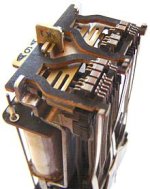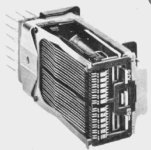Gregster613
Platinum Member
- Joined
- Apr 19, 2009
- Messages
- 915
- Tractor
- 273 TYM. 2009 //Yardmachines 7 Speed Shift-on-the-goScotts L2048
James, Thanks for the definitive explanation. I don't think I'll go that far; my luck I'd sink the ship!
Dale, Once again you come through with an easy to follow diagram to simplify a question. Thanks once more. Once I figure out how to bookmark anything I'll do so for future references.
LD1, You are correct, a Flasher Unit is cheap and will be much simpler to just replace than spend $ on parts and pieces to construct something that I may never again need to use. Thanks for the insight and thought.
LittleBill21, Thank you for assisting me in showing people that a relay tester is indeed in the marketplace and sold. I probably just had the wrong component plugged into it and that's why it was sparking. So I butchered up a piece of test equipment needlessly.
Oh well, I can always get another. I bought it just for the purpose of testing the glow plug relay if I ever needed to do so. I haven't needed it for that yet and hopefully won't. Although I now see that it's maybe not even a relay but rather a glow plug "Timer". It appears that proper wording is critical with these components. In my defense and lifetime though, I have heard the flasher called a relay before.
My thanks to all who've chimed in to help this electrical dufus get his vocabulary straight. I am quite embarrassed to having admit I'm a dufus in this respect thus I'd really rather put this issue to bed now that I'm better educated on wording. Don't worry, I'll probably have another dumb question for you all to chuckle over whilst educating me again in the future. I do now know something about electrical that I didn't before. Greg
Dale, Once again you come through with an easy to follow diagram to simplify a question. Thanks once more. Once I figure out how to bookmark anything I'll do so for future references.
LD1, You are correct, a Flasher Unit is cheap and will be much simpler to just replace than spend $ on parts and pieces to construct something that I may never again need to use. Thanks for the insight and thought.
LittleBill21, Thank you for assisting me in showing people that a relay tester is indeed in the marketplace and sold. I probably just had the wrong component plugged into it and that's why it was sparking. So I butchered up a piece of test equipment needlessly.
Oh well, I can always get another. I bought it just for the purpose of testing the glow plug relay if I ever needed to do so. I haven't needed it for that yet and hopefully won't. Although I now see that it's maybe not even a relay but rather a glow plug "Timer". It appears that proper wording is critical with these components. In my defense and lifetime though, I have heard the flasher called a relay before.
My thanks to all who've chimed in to help this electrical dufus get his vocabulary straight. I am quite embarrassed to having admit I'm a dufus in this respect thus I'd really rather put this issue to bed now that I'm better educated on wording. Don't worry, I'll probably have another dumb question for you all to chuckle over whilst educating me again in the future. I do now know something about electrical that I didn't before. Greg

